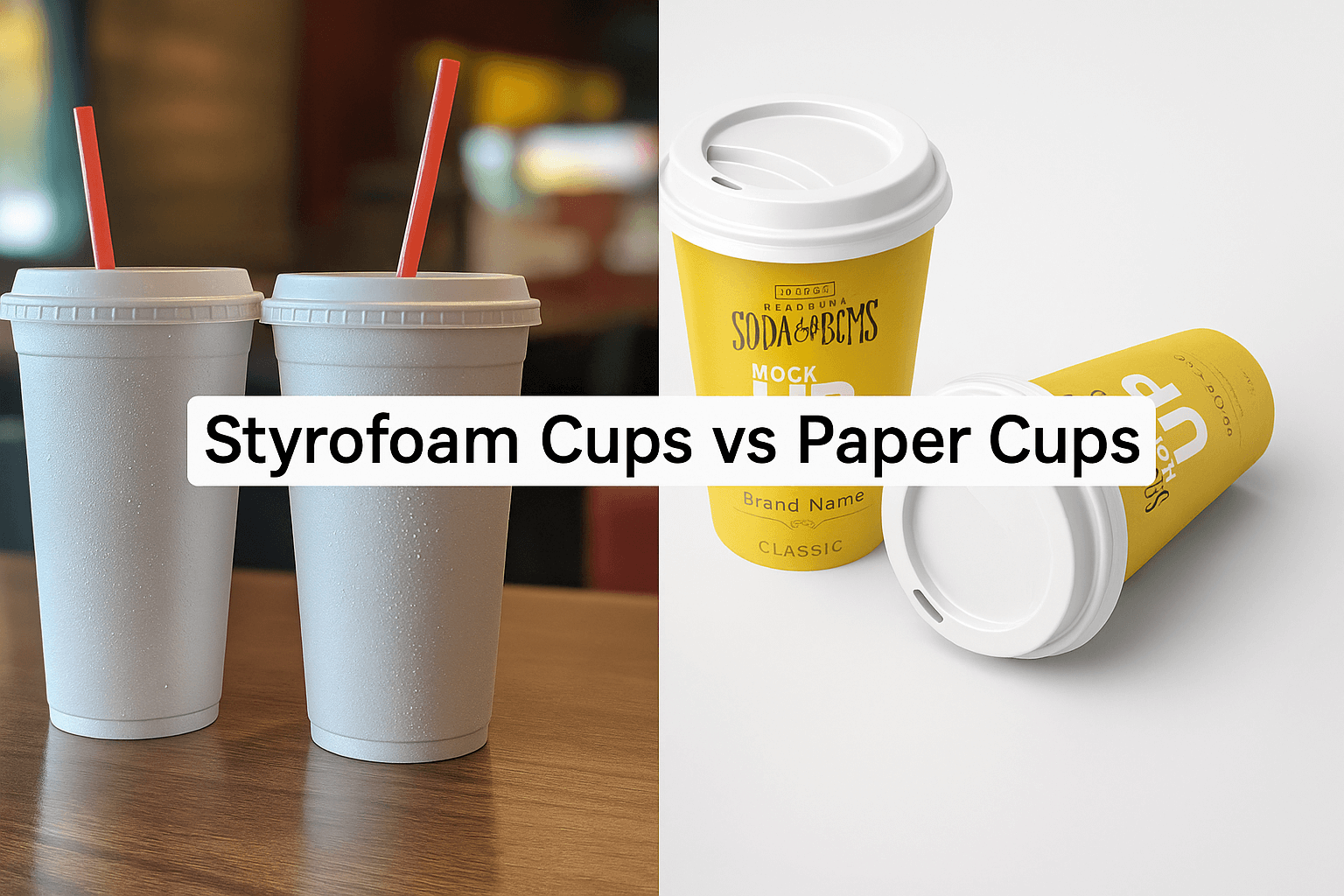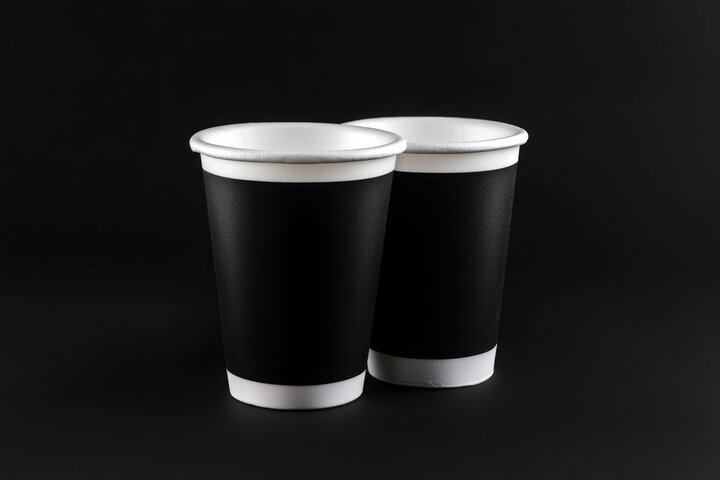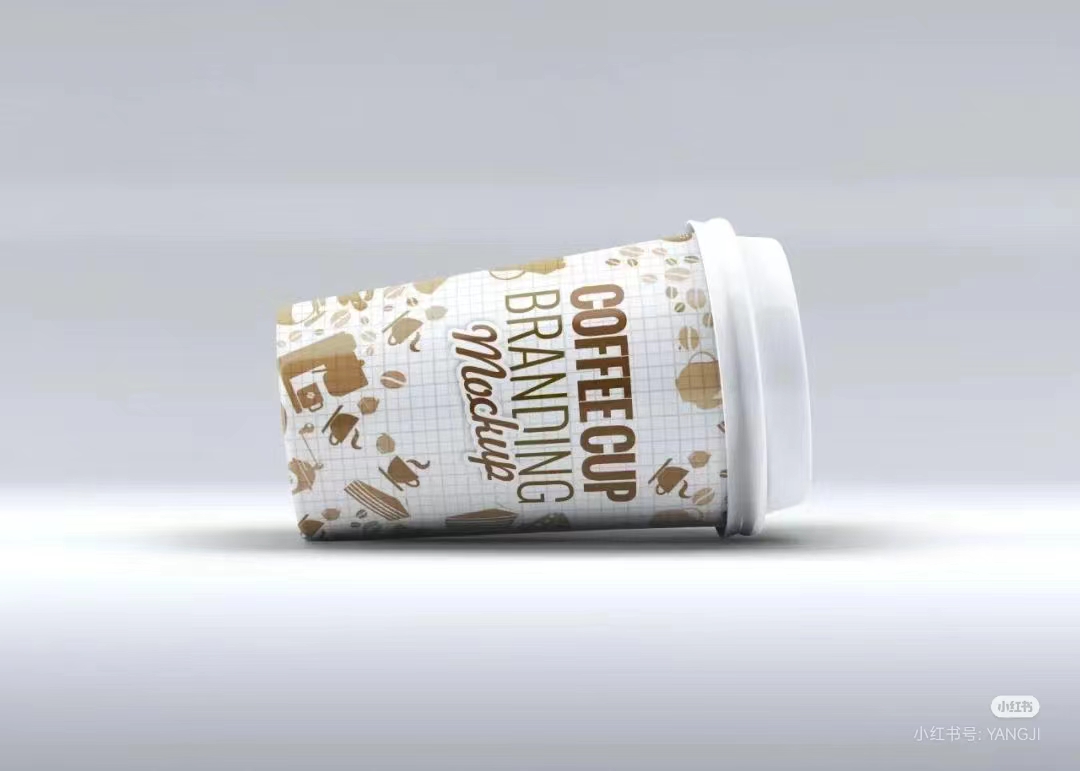
Styrofoam cups and paper cups are everywhere—but which is the better choice for your daily drink? Whether you’re grabbing coffee on the go or stocking up for your business, knowing the difference matters more than you think.
In this post, we’ll explore how Styrofoam cups vs paper cups compare in insulation, durability, cost, and comfort. You’ll discover which type holds up best with hot beverages, how they feel in hand, and what to consider before making your pick.
What Are Styrofoam Cups?
Styrofoam cups are lightweight, foam-like containers made from polystyrene. They’re often used for serving drinks and food. Known for their insulation ability, they help keep beverages at the right temperature for longer, making them a common choice in both homes and food service businesses.

How Styrofoam Cups Are Made
Raw Materials (Polystyrene Foam)
Styrofoam cups are made from polystyrene, a petroleum-based plastic that expands into foam when exposed to steam and heat.
Polystyrene beads are small plastic pellets made from petroleum chemicals, designed to expand under heat and trap air inside.
The trapped air gives the material its light, cushiony structure and helps it insulate hot or cold beverages effectively.
Typical Manufacturing Process
The manufacturing process involves heating, molding, and shaping polystyrene into cup forms using industrial machines.
Expanded beads are injected into pre-shaped molds, then heated again to form into cups with durable foam walls.
After cooling, the molded cups are removed from the machines, checked for shape, and packed for shipping or use.
Common Uses of Styrofoam Cups
Hot and Cold Beverages
Styrofoam is widely used for drinks because it keeps liquids warm or cool while being comfortable to hold.
Hot drinks like coffee or tea stay warm without needing cup sleeves or extra insulation for your hand.
Cold drinks like soda or juice remain chilled longer without causing the cup to sweat or feel damp outside.
Food Services and Takeaway
Many food service businesses prefer Styrofoam for its lightweight design, convenience, and insulation properties.
Used in fast food chains, Styrofoam cups are easy to stack, serve, and carry for dine-in or takeout orders.
In cafeterias or outdoor events, they’re chosen for their spill resistance, durability, and low cost per cup.
| Common Use | Reason Styrofoam Is Preferred |
| Coffee shops | Insulates heat well and doesn’t burn your hand |
| Fast food chains | Easy to use, lightweight, and cheap to produce |
| Outdoor festivals | Keeps drinks cool, no condensation, and easy to transport |
| Office breakrooms | Handy for daily coffee with no extra sleeves or clean-up |
What Are Paper Cups?
How Paper Cups Are Made
Types of Paperboard Used
The main material used is food-grade paperboard, which gives the cup its strength and shape. It starts as thick paper rolls, then gets shaped and coated.
Most paper cups use virgin paperboard to meet food safety standards and resist leakage during use.
Recycled paperboard is less common for food cups because it may contain inks, dyes, or glue traces from previous use.

Personalized Logo Eco-Friendly Paper Cups for Events
Coating Materials (Wax, PE, PLA)
To keep liquids from soaking through, a thin lining is added inside the cup. This coating also helps keep the cup's shape.
PE (polyethylene) is the most common liner. It’s water-resistant and seals the paper’s surface to hold liquids.
PLA (polylactic acid), made from plant sources, is another option. It’s used more in compostable cup designs.
Wax coatings were used in older paper cups. Today, they’re rare but still found in some cold drink cups.
| Coating Type | Used For | Description |
| PE (Polyethylene) | Hot & cold drinks | Durable and waterproof, sticks firmly to paperboard |
| PLA | Compostable drinks | Made from plants, good for short-term liquid contact |
| Wax | Cold drinks | Soft coating, less common in modern paper cups |
Common Uses of Paper Cups
Coffee Shops, Offices, Catering Services
Paper cups are everywhere people need drinks on the go. They’re easy to print on, which is why many cafés and events use them.
Coffee shops use double-wall or sleeve-covered cups to serve hot drinks without burning your hand.
Offices often keep stacks of paper cups near water dispensers or coffee machines for staff convenience.
Catering services choose paper cups because they’re quick to serve, light to transport, and disposable.
Popular Scenarios:
Meetings & Events: Easy for guests to use, no washing needed afterward.
To-Go Counters: Stackable design makes fast service more efficient.
Home Use: Handy for parties or when you don’t want to do dishes.
| Location | Why Paper Cups Are Chosen |
| Coffee shops | Easy branding, heat-safe when used with sleeves |
| Corporate offices | Convenient for staff coffee or water usage |
| Large events | Lightweight, stackable, quick to serve large crowds |
Styrofoam Cups vs Paper Cups: Feature-by-Feature Comparison
1. Insulation & Heat Retention
Styrofoam cups trap heat better due to their air-filled foam structure. They keep drinks hot or cold for longer without extra layers. Paper cups lose heat faster, especially if they’re single-wall.
Styrofoam cups usually keep drinks hotter for longer periods than single-wall or double-wall paper cups.
Paper cups often require a sleeve or double-layer to avoid burning your hand while holding hot drinks.
Double-wall paper cups provide more insulation than single-wall ones but still lag behind Styrofoam in heat retention.
| Cup Type | Heat Retention | Sleeve Needed |
| Styrofoam | Excellent | No |
| Paper (Single-Wall) | Poor | Yes |
| Paper (Double-Wall) | Moderate | Sometimes |
2. Durability and Strength
Styrofoam cups hold their shape well and don’t collapse easily. Paper cups, depending on the quality, can become soft or leak after long use.
Styrofoam handles pressure better and doesn’t get soggy when holding liquids for extended periods.
Paper cups may collapse or bend if the liquid sits too long or the coating wears down.
Hot liquids can weaken paper cups over time if they’re not properly lined or insulated.
Key Points:
Styrofoam resists pressure and heat-related warping better than basic paper cups.
Paper cups may leak if left with liquid too long, especially when coatings start to break down.
3. Weight and Portability
Both cup types are lightweight, but Styrofoam cups tend to be lighter and more space-efficient for transport.
Styrofoam cups are lighter per piece and easier to carry in bulk than paper cups of similar size.
Paper cups may weigh slightly more due to added coatings, walls, or attached sleeves.
Both stack easily, but Styrofoam offers better padding, reducing damage during shipping.
| Feature | Styrofoam Cup | Paper Cup |
| Weight per cup | Very light | Light |
| Transport durability | Excellent cushioning | May deform if packed tightly |
| Bulk storage | Space-efficient | Requires care to avoid bending |
4. Health and Safety Concerns
Potential Chemical Leaching
Styrofoam contains styrene, a chemical that can leach into hot beverages under high temperatures. Paper cups, on the other hand, are lined with wax or plastic—these coatings may not leach chemicals as easily but can still raise concerns if heated.
Styrofoam may release small amounts of styrene when exposed to boiling hot drinks or microwave heat.
Paper cup linings—like polyethylene or wax—are food-safe but may break down if overheated.
Neither type should be reused multiple times with hot liquids.
Microwave Safety
Styrofoam cups are not microwave-safe and may melt or release harmful substances. Paper cups are slightly safer, depending on the coating, but still risky if microwaved too long.
Never microwave Styrofoam; it can deform and leak chemicals quickly under heat.
Some paper cups can handle mild reheating, but heat may loosen their coatings or soften the cup.
| Cup Type | Microwave Safe? | Risk Factors |
| Styrofoam | No | Melting, chemical release |
| Paper (PE Coated) | Not recommended | Coating may soften or detach |
| Paper (PLA Coated) | Limited use | Best with warm liquids, not boiling hot drinks |
5. Taste and Smell Retention
The material of a cup can slightly affect how drinks taste or smell. This often depends on the liquid and how long it sits in the cup.
Styrofoam may give off a mild plastic-like smell, especially when used with hot drinks like coffee or tea.
Paper cups are mostly neutral, though some coatings or recycled materials might have a faint odor.
Long-term use or improper storage can amplify the smell in either cup type.
Quick Notes:
Styrofoam cups may slightly affect flavor when used with acidic or very hot beverages.
Paper cups generally preserve the drink’s natural aroma better, especially when freshly served.
Cost Comparison of Styrofoam vs Paper Cups
Initial Purchase Price
Styrofoam cups are usually cheaper than paper cups. They're lightweight, use less material, and are faster to produce. Paper cups often cost more due to extra layers or coatings, especially for hot drinks.
Styrofoam is often the go-to choice for large orders because of its lower cost per unit in bulk purchases.
Paper cups may look simple but can include extra materials like sleeves or double walls, which raise costs.
Businesses on tight budgets tend to prefer foam cups for quick, disposable use.
| Cup Type | Average Cost per 1000 Cups |
| Styrofoam Cups | $50 – $80 |
| Paper Cups | $80 – $120 |
Key Points:
Long-Term Usability & Business Considerations
Cost isn’t just about buying the cup. How long it lasts and how customers respond also matter. Paper cups may cost more, but some users prefer the feel or look—especially for hot drinks.
Styrofoam’s better insulation means no sleeves, reducing extra supply costs during service.
Paper cups may lead to additional sleeve expenses, especially when serving hot beverages to go.
Customers may favor paper for its look and feel, leading to better brand experience or repeat use.
Considerations for Long-Term Use:
Replacement Rate: Foam cups are sturdy but can break if squeezed. Paper cups may soften with time, especially if single-wall.
Customer Preference: Some people prefer paper for coffee and foam for cold drinks, which could influence what you stock.
Perception Matters: If your customers think one cup type feels better, they may return more often.
| Factor | Styrofoam | Paper |
| Needs cup sleeve | No | Often, unless double-walled |
| Breakage or softening rate | Low under pressure | Can weaken if left with hot liquid |
| Preferred by coffee drinkers | Common in offices, basic cafés | Often favored in upscale settings |
Storage and Shelf Life
Storage Requirements
Styrofoam cups should be stored in a cool, dry place. They are sensitive to temperature fluctuations, which could affect their structure. It's also important to protect them from excessive humidity, as this can cause warping. Exposure to direct light may degrade the material over time, leading to discoloration and weakening. Ideal conditions are cool and dry, away from direct sunlight.
Shelf Life Expectations
How long do Styrofoam cups last?
Styrofoam cups can last for several years if stored properly. They are not biodegradable, so they don’t degrade easily. However, if exposed to extreme conditions, such as high heat or moisture, their lifespan may decrease. Typically, they remain in good condition for 3 to 5 years under proper storage conditions.
Do paper cups degrade in storage?
Paper cups, unlike Styrofoam, are more susceptible to degradation over time. If stored in a humid environment, they may absorb moisture, leading to weakening or even mold growth. In ideal conditions (dry and cool), paper cups can last up to 2 years. However, prolonged exposure to moisture or extreme heat can reduce their effectiveness, causing them to deteriorate faster.
Choosing the Right Cup for Your Beverage or Event
For Hot Beverages
Styrofoam cups retain heat well, making them a go-to choice for hot drinks in fast-food chains. Paper cups, however, often need sleeves for heat protection. Double-wall paper cups offer better insulation but still can't match Styrofoam's heat retention.
For Cold Beverages
Styrofoam excels at preventing condensation, keeping drinks cold without exterior sweating. Paper cups, although moisture-resistant with coatings, tend to develop condensation, which can cause instability.
Branding and Customization
Paper cups are excellent for branding, offering sharp and vibrant designs. While Styrofoam can be customized, its print quality is typically less detailed compared to paper.
Suitability for Business or Events
Cafés: Paper cups for branding.
Offices: Styrofoam for cost-effectiveness.
Catering: Paper cups for upscale events, Styrofoam for casual.
Budget: Styrofoam is more affordable.
Which Cup Is Best for You
Consider insulation, durability, and budget. Styrofoam offers better heat retention and cold beverage handling, while paper excels in customization and branding.
Conclusion
Styrofoam cups provide better insulation and durability, while paper cups are more eco-friendly and customizable. When choosing the right cup, consider factors like beverage type, cost, and practicality rather than trends. Practical needs should always guide the decision for the most suitable disposable cup.
For your next event or business, prioritize cost, insulation, and branding. Choose the cup that best suits your requirements, ensuring both customer satisfaction and practicality. Make an informed choice based on real-world needs.
FAQ
Are Styrofoam cups safe to drink from?
Styrofoam cups are generally safe for drinking. However, high temperatures may cause styrene to leach into beverages, especially in hot drinks.
Can I microwave my paper cup?
Microwaving paper cups is usually safe, but it depends on the lining. Cups without plastic or wax lining are safer in the microwave.
Why do some paper cups leak?
Leaks often occur due to poor-quality coatings or manufacturing defects. The paperboard may absorb moisture, weakening the structure and causing leaks.
What is the best disposable cup for hot drinks?
For hot beverages, foam cups are often the best choice due to superior insulation. Double-wall paper cups also provide good heat retention.
Reference Sources
[1] https://driftaway.coffee/styrofoam-vs-paper-cups/
[2] https://www.intcorecycling.com/disposable-paper-cup-and-styrofoam-cup-which-one-is-more-environmentally-friendly.html
[3] https://www.reddit.com/r/bestof/comments/678nbw/redditor_concisely_breaks_down_the_foam_vs_paper/
[4] https://www.unomaha.edu/nebraska-business-development-center/about/cbagreenteam/Green-Team-archive/uno-news-8.pdf
[5] https://gmz.ltd/paper-cups-vs-foam-cups/
[6] https://recyclenation.com/2010/03/styrofoam-paper-cups/
[7] https://it.srpapercup.com/resources/paper-cups-vs-styroform.html
[8] https://www.youtube.com/watch?v=TwFP0UGbM90
[9] https://papercon.com/food-packaging/paper-cups-vs-styrofoam/
[10] https://www.scyphus.co.uk/2019/11/11/why-replace-styrofoam-cups-with-paper-coffee-cups-like-dunkin-donuts/



























